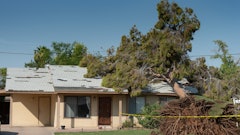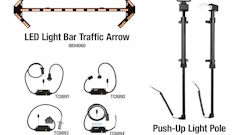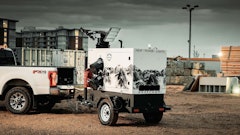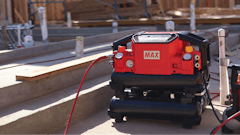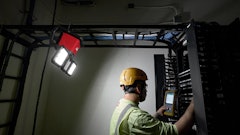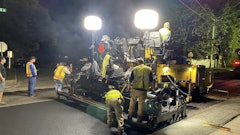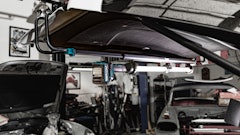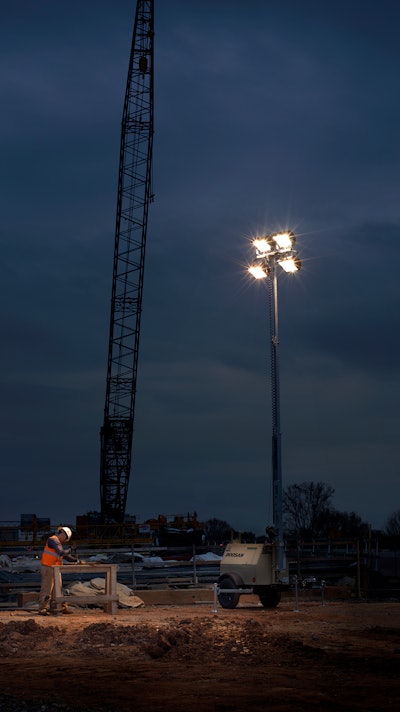
Whether benching a large area for a new manufacturing plant or final grading plots for a housing development, site prep work requires clear visibility in and around the jobsite. During daylight hours, this is easily achieved with natural light, well-trained equipment operators and safety gear such as high-vis vests. Site prep at night requires the use of artificial light to achieve the right level of visibility.
Completing site prep at night may be necessary near high-traffic areas, or at locations where daytime temperatures require starting before dawn or after dusk to avoid heat-related risks. In some instances, project timelines may drive the need for nighttime site prep. Whatever the reason, a properly illuminated work area is not only necessary for safety but can also affect productivity.
Portable light towers cast light over a wider area than equipment-mounted lights or side lighting kits. The increased visibility improves safety, especially for crew members on the ground, and eliminates shadows where obstacles, such as utilities or water lines, may not be easily seen. A properly illuminated work site allows equipment operators to work across a large surface area at a more consistent pace for better overall productivity.
How Many Towers?
Ensuring a properly illuminated jobsite starts with determining the adequate number of light towers needed for the space. That is determined by the recommended number of foot-candles — a measurement of light intensity — based on standards from the Illuminating Engineering Society of North America (IES).
For example, 10 to 50 foot-candles are recommended for utility work, while 1 to 5 foot-candles are suggested for illuminating a parking lot. Your local equipment dealer can help you calculate all the factors that determine the lighting needs of an application. These include the size of the area, whether light needs to be constant and how bright the light should be.
Below is an example of how to determine the lighting needs for a site prep application with an area of 700 ft. by 300 ft. The IES recommendation calls for 2 foot-candles for this type of application.
The area to be illuminated is 210,000 sq. ft. with 2 foot-candles of illumination
210,000 sq. ft. x 2 foot-candles = 420,000
A 1,000-watt metal halide lamp provides an average of 0.5 foot-candles per 82,000 sq. ft.
0.5 x 82,000 = 41,000
420,000 / 41,000 = 10.2 metal halide lamps
Most light towers are standard-equipped with four lamps per light tower, which would require three light towers for this application. However, some light towers, including the Doosan L8 model, are available with a six-lamp option. In this instance, a six-lamp option would allow for using only two light towers while still providing the proper level of illumination. Additionally, light tower fixtures are often adjustable, rotating horizontally and vertically with a locking pin system to provide optimal beam spread.
While metal halide bulbs are standard for most light towers, LED lights are becoming more popular due in part to the longer life span of the light. Both types provide sufficient illumination for this scenario, so light tower selection for an actual jobsite would depend on which lamp type provides the most advantages for the application.
Light and power: In addition to producing the necessary light to keep a jobsite active, most light towers also offer enough kilowatts to power small hand-held tools. A little extra power is attractive for jobsites without access to grid power — a common scenario for site prep applications. Doosan LED fixtures use less than 1 kW of energy, leaving more auxiliary power available for operating small electrical tools on the jobsite.
Productivity: When productivity is the priority, LED fixtures offer the advantage of instant on and off operation. Work begins immediately. Metal halide light fixtures can take up to 15 minutes to reach full illumination and require a cool-down period before storage or transport.
Fuel costs: Fuel efficiency is another consideration when selecting a light tower. LED fixtures are 50% more fuel-efficient than metal halide lamps. That translates into more hours of light from a single tank of fuel and a cost savings from less frequent refueling.
Cost of ownership: While metal halide bulbs have a lower initial cost, Doosan LED fixtures have a longer warranty and more hours of use than metal halide lights. LED fixtures have a 5-year warranty and are rated to perform 50,000 hours. In most instances, LED lamps won’t need to be replaced during the life cycle of the light tower.
The long-term result of lights that outlast the life span of a light tower and provide 50% percent greater fuel cost savings: LED fixtures can pay for themselves within a handful of years.
Understanding how to calculate the adequate number of light towers for a site prep application can help keep safety and productivity as top priorities. And understanding the advantages of metal halide and LED lights can help determine which option is best suited to your business.



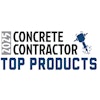
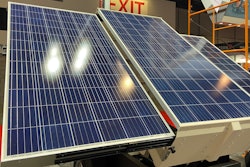
![[VIDEO] LED Fixtures Use Half the Fuel on Doosan LSC Light Towers with Kubota Engine](https://img.forconstructionpros.com/files/base/acbm/fcp/image/2017/03/default.58d15acb07f86.png?auto=format%2Ccompress&fit=crop&h=167&q=70&w=250)





